My flock enjoys the many benefits of free-ranging all year long, but in winter, their familiar green, lush plant supply is often buried underneath unreasonable amounts of snow, so I decided to experiment with supplementing their entertainment docket with sprouted grains. Sprouts are whole grains or seeds that are grown with water before being fed to the chickens. Sprouting grains is an easy way to provide chickens with fresh, boredom buster on special occasions with very little effort.
This article addresses the basics of sprouting grains for the average backyard flock as an occasional treat, not as the primary feed source. Endless resources are available on the topic of growing fodder for chickens and ruminants as the chief dietary component, a smattering of which I have cited below.
SPROUTS vs. FODDER
It took me a long time to wrap my head around the subtle differences between sprouts and fodder. The terms are often used interchangeably, but the Sprodder Police get upset when we do that, so…let’s not go there. Sprouts and fodder are simply different stages of the same germinated grains. Sprouts are germinated seeds grown to less than four inches in height, fodder is grown from the same germinated seeds to a height greater than four inches. While the process for growing sprouts and fodder is similar, fodder obviously takes longer to grow, which presents the risk of dangerous mold growth.Growing fodder requires slightly different sanitation procedures, often involving bleach or hydrogen peroxide. There are subtle nutritional differences between sprouts and fodder, but I have not been persuaded that growing grain to the fodder stage for use as a feed supplement is worth the time, effort or limited risk for a chicken supplement. Additionally, I worry about the length of fodder causing crop impaction in my birds, so I’ll stick with sprouts. I like to sprout wheat grains to the four or five inch height, which takes a mere six days.
BENEFITS OF SPROUTING:
The best review I found of the nutritional benefits of sprouts can be found here, but a summary of some of the benefits includes:
- Year-round access to fresh greens regardless of the weather
or outside growing conditions. - Entertainment for bored chickens
- Makes the vitamins, minerals and proteins in the grains more bioavailable to the chickens. Think of grains as a nutrition packet wrapped in protective packaging. When eaten as-is with the seed packaging in place, the grain is prevented from being fully utilized nutritionally. Sprouting removes that packaging, freeing up the good stuff to break down and transform into even better stuff.
- Sprouting improves the enzyme content, making it more easily digested than grains; after sprouting, a grain becomes 40-50% more digestible to the bird, which means that they are getting more nutrition and fiber than from the same amount of unsprouted grain
- Sprouts are loaded with chlorophyll and beta-carotene, resulting in darker yolks.
Tips for Success
- Acquire the grains from a reputable source, ensuring that they have not been treated and are fresh. Health food stores, feed stores and online merchants are all sources to consider.
- Always use clean containers and clean, fresh water.
- Sprouting can be done on the kitchen counter. No special lighting necessary.
- Room temperature should be between 45°F and 69°F.
- No special equipment is necessary, but someone is always happy to take your money for special growing trays.
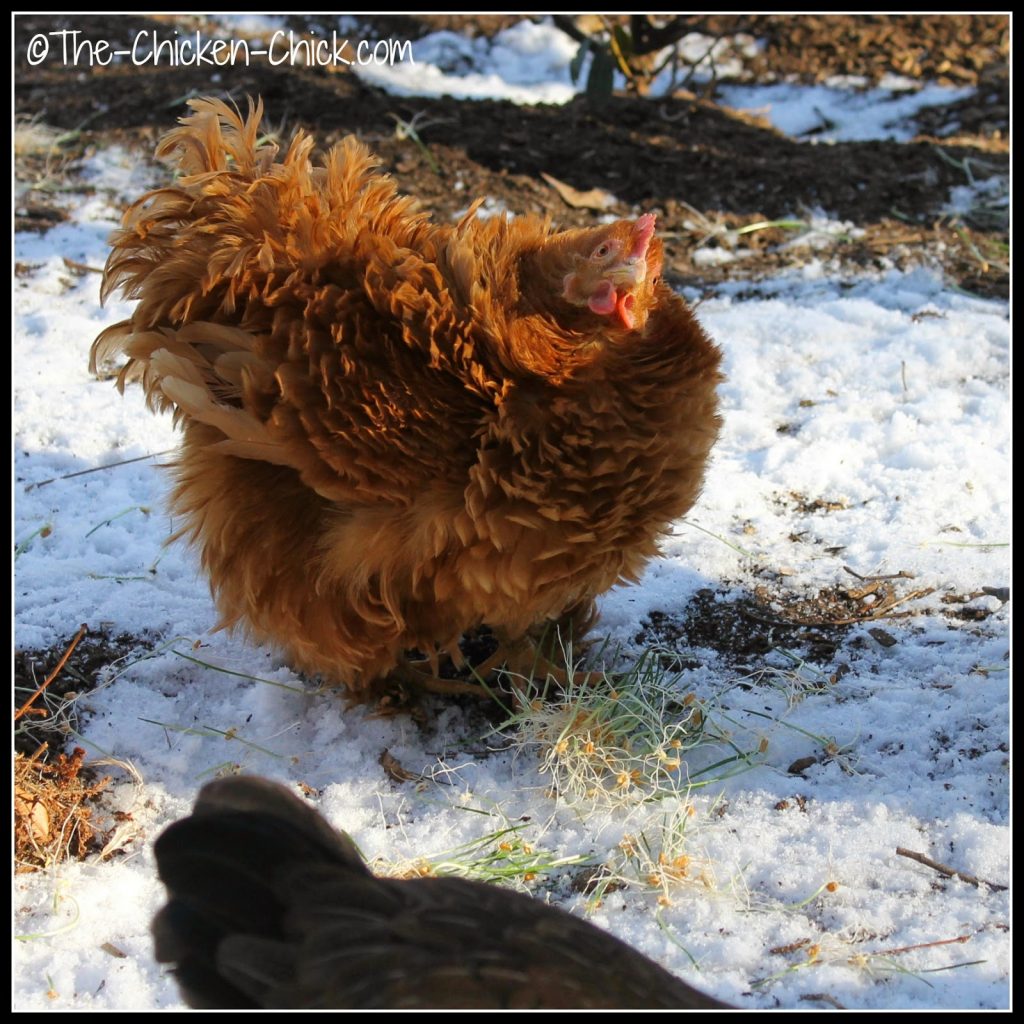
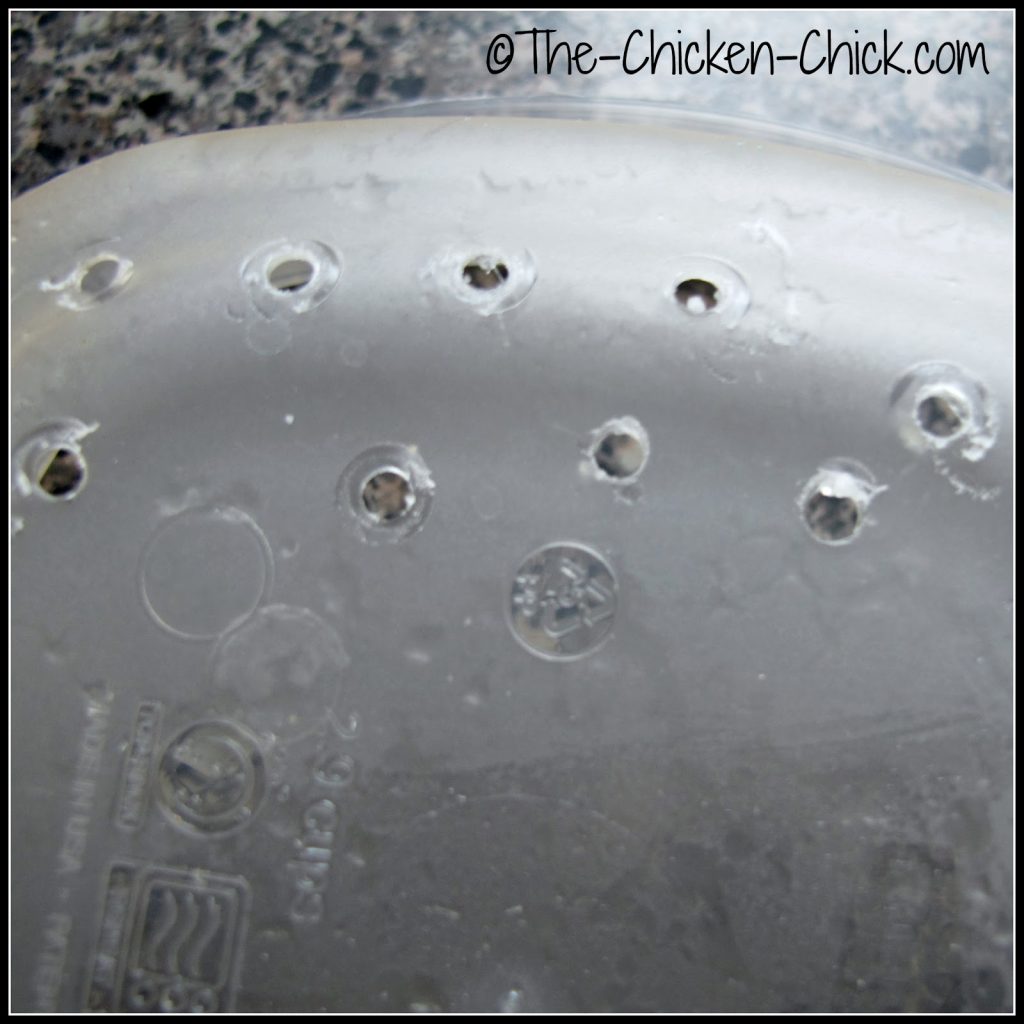
The method for sprouting grains is incredibly simple: rinse, soak overnight, rinse twice a day, drain well in between rinsing. Got it? Good, let’s complicate it.
MATERIALS NEEDED
- A plastic container with drain holes in it (any inexpensive container will do- round, square, rectangle)
- Whole grain wheat and barley are the two most commonly sprouted grains, but sprouting can be done with oats, sunflower seeds, alfalfa, lentils, clover, mung beans, soybeans, etc.
- Fresh water.
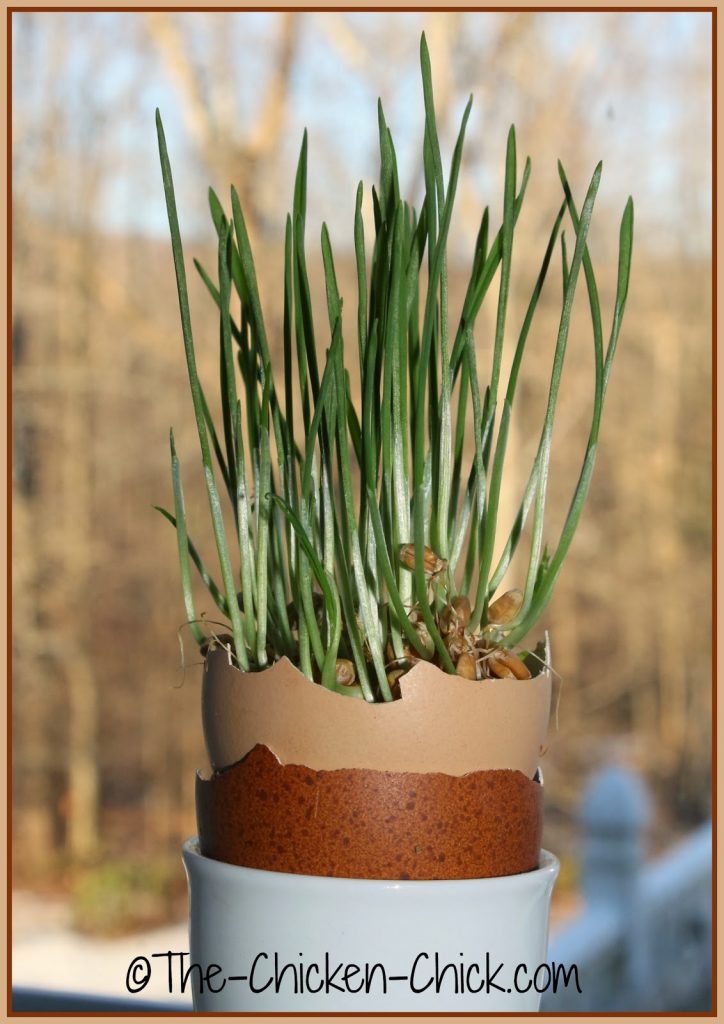
THE PROCESS (blink and you’ll miss it)
- In a large bowl, cover the grains with fresh water and soak a minimum of 8 hours to a maximum of 24 hours. (I soak mine overnight)
- Create holes in the chosen container that are small enough that the grain doesn’t fall through them.
- At the end of the soaking period, drain grains well and spread them to ¼”- ½ inch deep in chosen container.
- Place container over a second, slightly larger container to allow the water to drain off the grains fully.
- The sprouts should be watered and then drained fully twice each day for six days. By day six, the sprouted grains are ready to be fed to the flock.
- Soak overnight
- After an overnight soak, grains have already begun to sprout
- At 24 hours
- Day 2. The sprouts can be fed to the chickens at any point, but the nutritional benefits max out around day six
- Day 3
- Day 4
- Day 5
- Day 6. This is the maximum height I like to sprout to- longer than 4-5″ isn’t necessary
- Day 7. Now it’s pretty and decorative to keep on the windowsill!
- Day 7. The root mat was a bit thicker than desired on this batch. Fewer seeds were used in subsequent batches
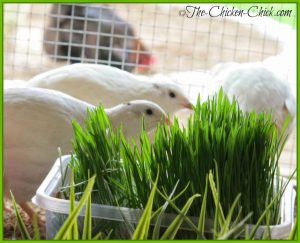
Quail like sprouted grains too!
Sources & further reading:
www.foddersolutions.net
www.wikipedia.org
www.farmtek.com
www.mun.ca
www.wholegrainscouncil.org
www.marksdailyapple.com
www.foddersystems.com
www.sproutnet.com
Kathy Shea Mormino
Affectionately known internationally as The Chicken Chick®, Kathy Shea Mormino shares a fun-loving, informative style to raising backyard chickens. …Read on


shop my SPONSORS
My flock enjoys the many benefits of free-ranging all year long, but in winter, their familiar green, lush plant supply is often buried underneath unreasonable amounts of snow, so I decided to experiment with supplementing their entertainment docket with sprouted grains. Sprouts are whole grains or seeds that are grown with water before being fed to the chickens. Sprouting grains is an easy way to provide chickens with fresh, boredom buster on special occasions with very little effort.
This article addresses the basics of sprouting grains for the average backyard flock as an occasional treat, not as the primary feed source. Endless resources are available on the topic of growing fodder for chickens and ruminants as the chief dietary component, a smattering of which I have cited below.
SPROUTS vs. FODDER
It took me a long time to wrap my head around the subtle differences between sprouts and fodder. The terms are often used interchangeably, but the Sprodder Police get upset when we do that, so…let’s not go there. Sprouts and fodder are simply different stages of the same germinated grains. Sprouts are germinated seeds grown to less than four inches in height, fodder is grown from the same germinated seeds to a height greater than four inches. While the process for growing sprouts and fodder is similar, fodder obviously takes longer to grow, which presents the risk of dangerous mold growth.Growing fodder requires slightly different sanitation procedures, often involving bleach or hydrogen peroxide. There are subtle nutritional differences between sprouts and fodder, but I have not been persuaded that growing grain to the fodder stage for use as a feed supplement is worth the time, effort or limited risk for a chicken supplement. Additionally, I worry about the length of fodder causing crop impaction in my birds, so I’ll stick with sprouts. I like to sprout wheat grains to the four or five inch height, which takes a mere six days.
BENEFITS OF SPROUTING:
The best review I found of the nutritional benefits of sprouts can be found here, but a summary of some of the benefits includes:
- Year-round access to fresh greens regardless of the weather
or outside growing conditions. - Entertainment for bored chickens
- Makes the vitamins, minerals and proteins in the grains more bioavailable to the chickens. Think of grains as a nutrition packet wrapped in protective packaging. When eaten as-is with the seed packaging in place, the grain is prevented from being fully utilized nutritionally. Sprouting removes that packaging, freeing up the good stuff to break down and transform into even better stuff.
- Sprouting improves the enzyme content, making it more easily digested than grains; after sprouting, a grain becomes 40-50% more digestible to the bird, which means that they are getting more nutrition and fiber than from the same amount of unsprouted grain
- Sprouts are loaded with chlorophyll and beta-carotene, resulting in darker yolks.
Tips for Success
- Acquire the grains from a reputable source, ensuring that they have not been treated and are fresh. Health food stores, feed stores and online merchants are all sources to consider.
- Always use clean containers and clean, fresh water.
- Sprouting can be done on the kitchen counter. No special lighting necessary.
- Room temperature should be between 45°F and 69°F.
- No special equipment is necessary, but someone is always happy to take your money for special growing trays.


The method for sprouting grains is incredibly simple: rinse, soak overnight, rinse twice a day, drain well in between rinsing. Got it? Good, let’s complicate it.
MATERIALS NEEDED
- A plastic container with drain holes in it (any inexpensive container will do- round, square, rectangle)
- Whole grain wheat and barley are the two most commonly sprouted grains, but sprouting can be done with oats, sunflower seeds, alfalfa, lentils, clover, mung beans, soybeans, etc.
- Fresh water.

THE PROCESS (blink and you’ll miss it)
- In a large bowl, cover the grains with fresh water and soak a minimum of 8 hours to a maximum of 24 hours. (I soak mine overnight)
- Create holes in the chosen container that are small enough that the grain doesn’t fall through them.
- At the end of the soaking period, drain grains well and spread them to ¼”- ½ inch deep in chosen container.
- Place container over a second, slightly larger container to allow the water to drain off the grains fully.
- The sprouts should be watered and then drained fully twice each day for six days. By day six, the sprouted grains are ready to be fed to the flock.
- Soak overnight
- After an overnight soak, grains have already begun to sprout
- At 24 hours
- Day 2. The sprouts can be fed to the chickens at any point, but the nutritional benefits max out around day six
- Day 3
- Day 4
- Day 5
- Day 6. This is the maximum height I like to sprout to- longer than 4-5″ isn’t necessary
- Day 7. Now it’s pretty and decorative to keep on the windowsill!
- Day 7. The root mat was a bit thicker than desired on this batch. Fewer seeds were used in subsequent batches

Quail like sprouted grains too!
Sources & further reading:
www.foddersolutions.net
www.wikipedia.org
www.farmtek.com
www.mun.ca
www.wholegrainscouncil.org
www.marksdailyapple.com
www.foddersystems.com
www.sproutnet.com




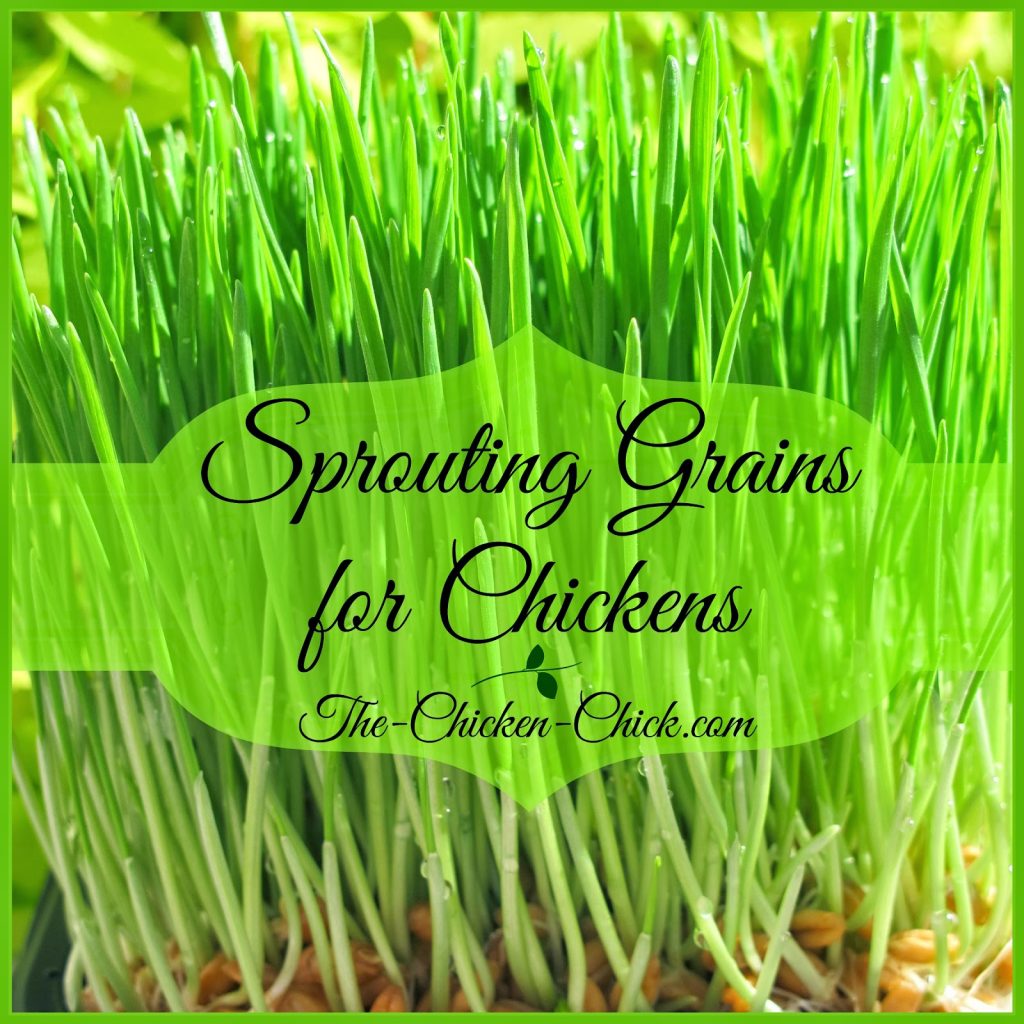
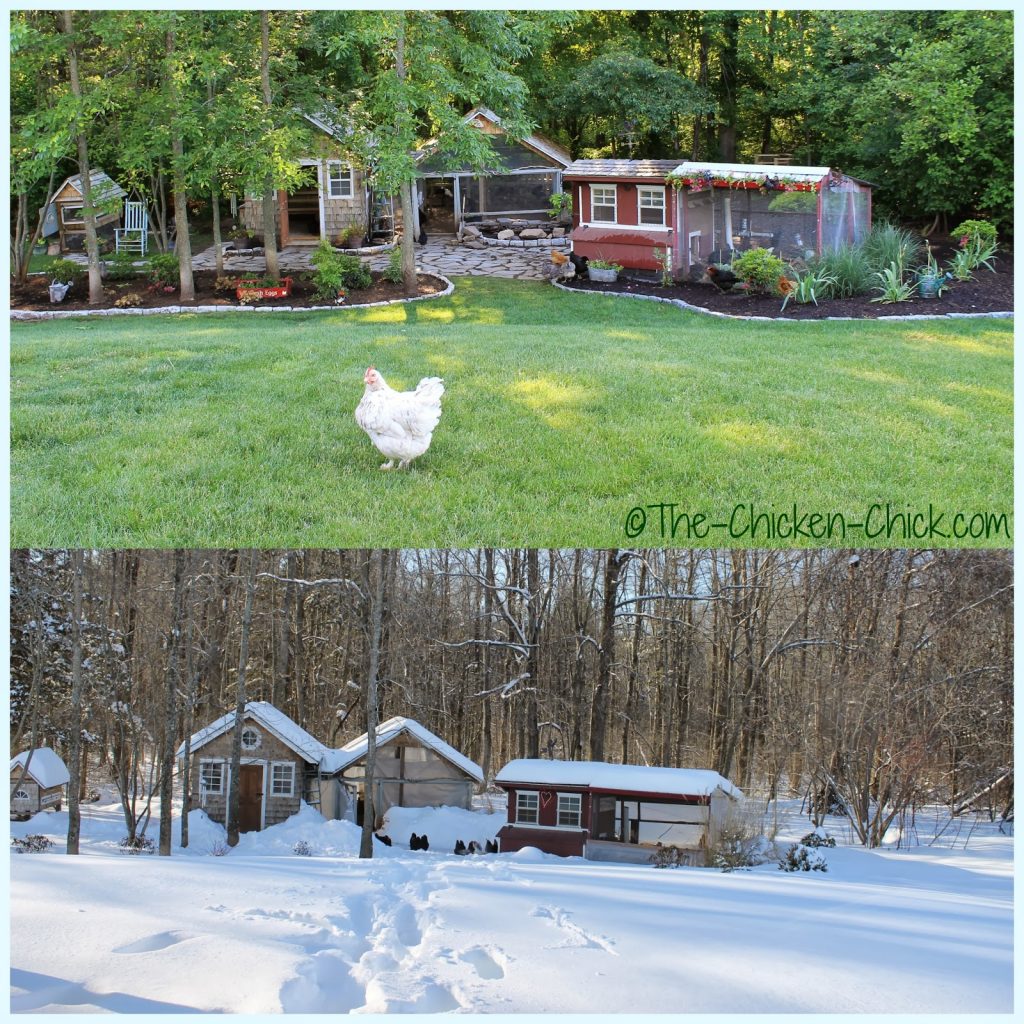
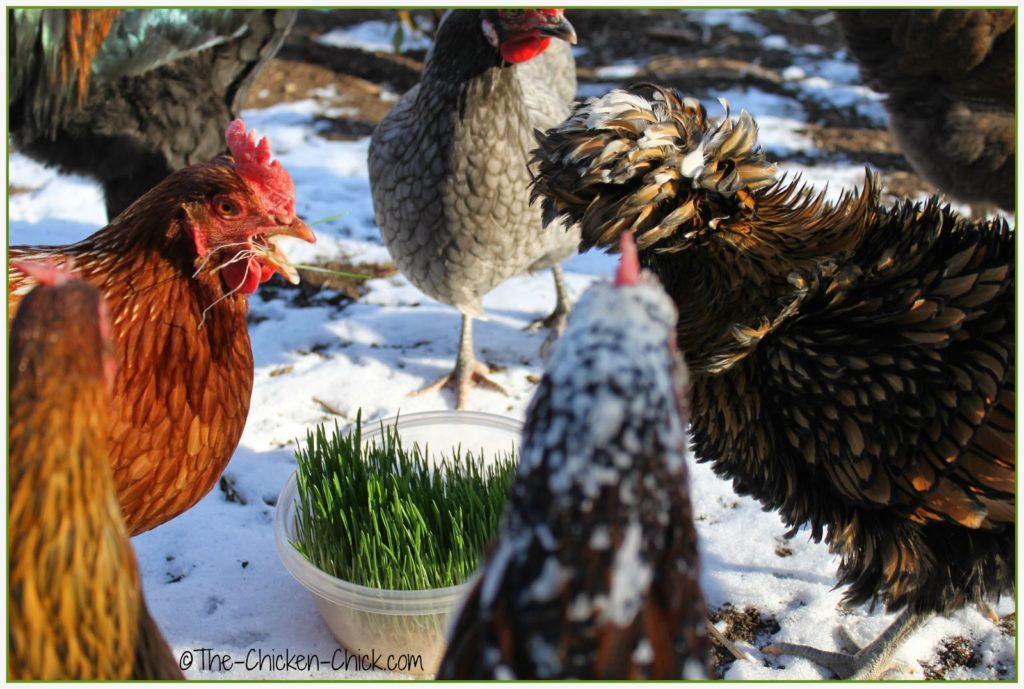
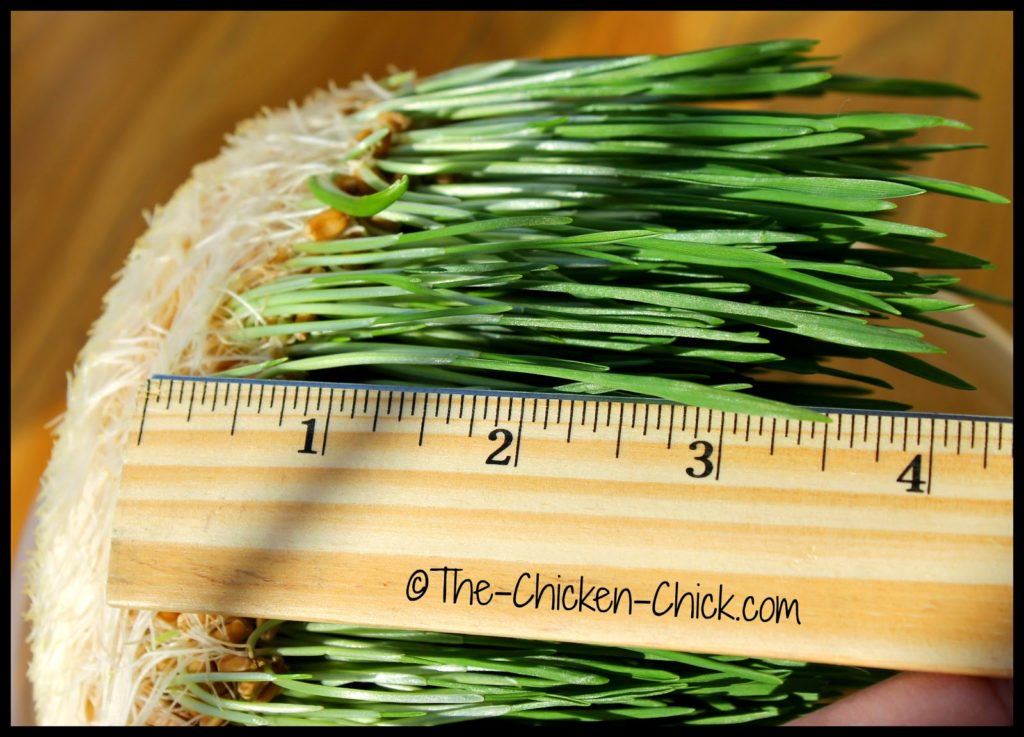
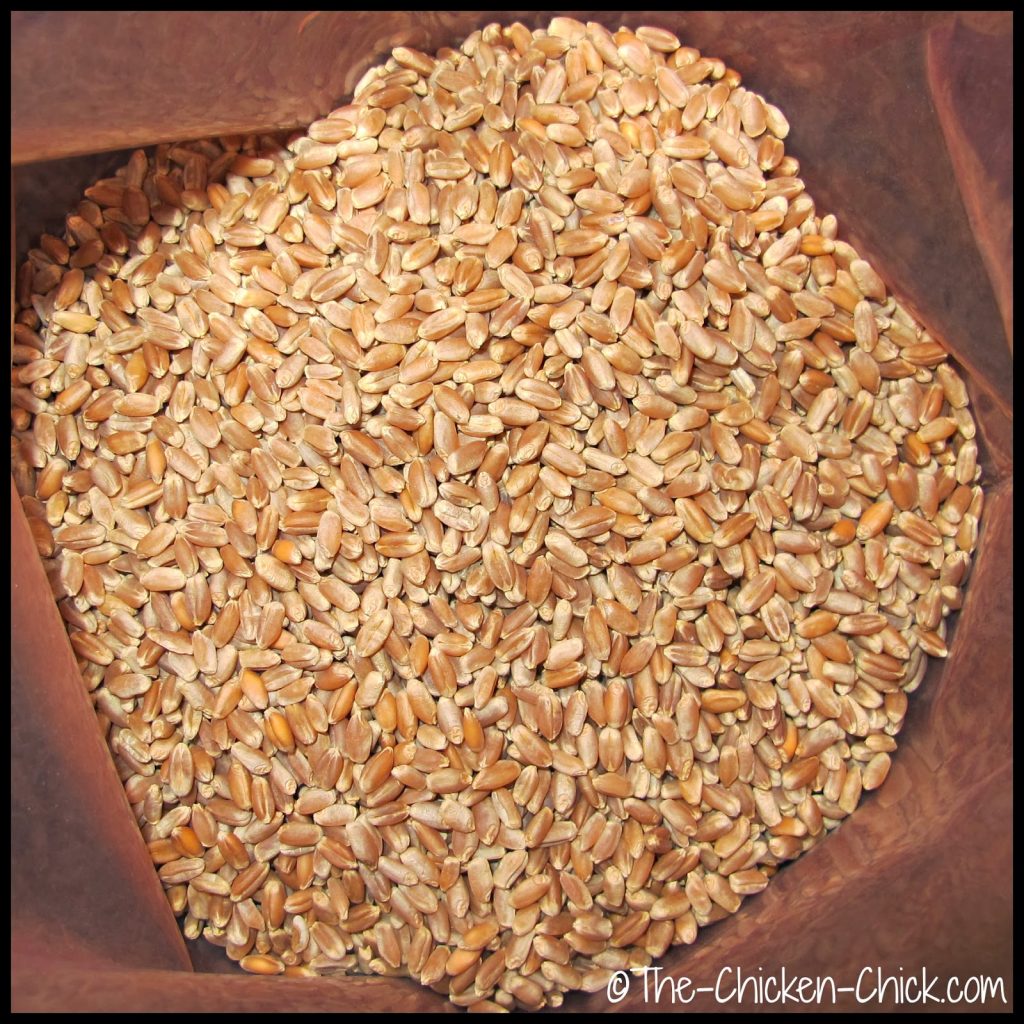
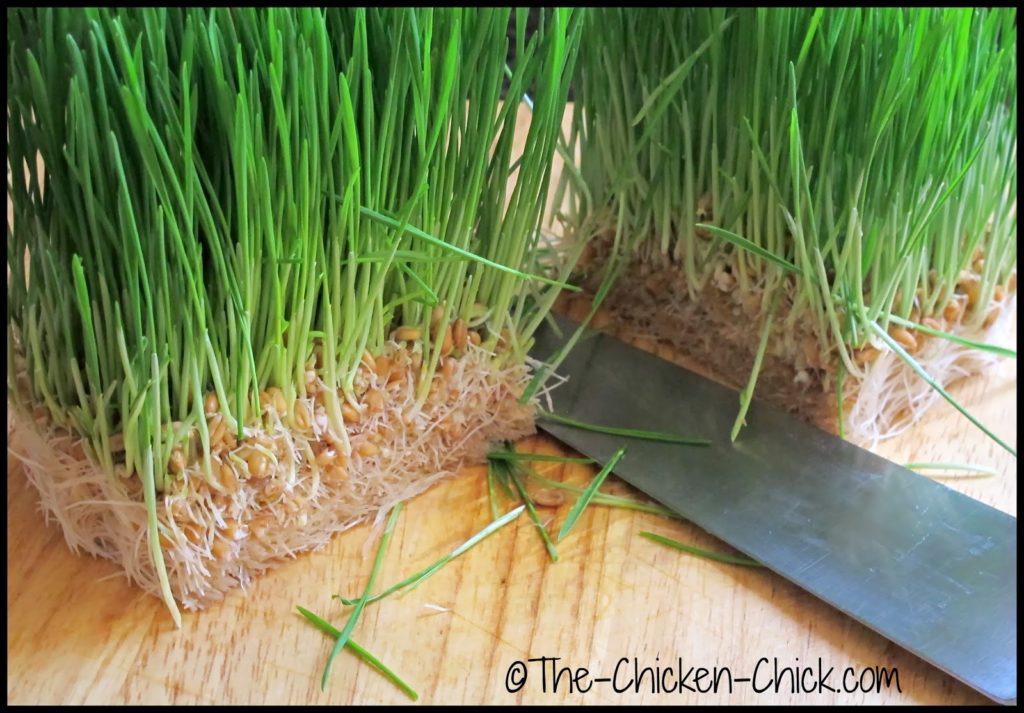
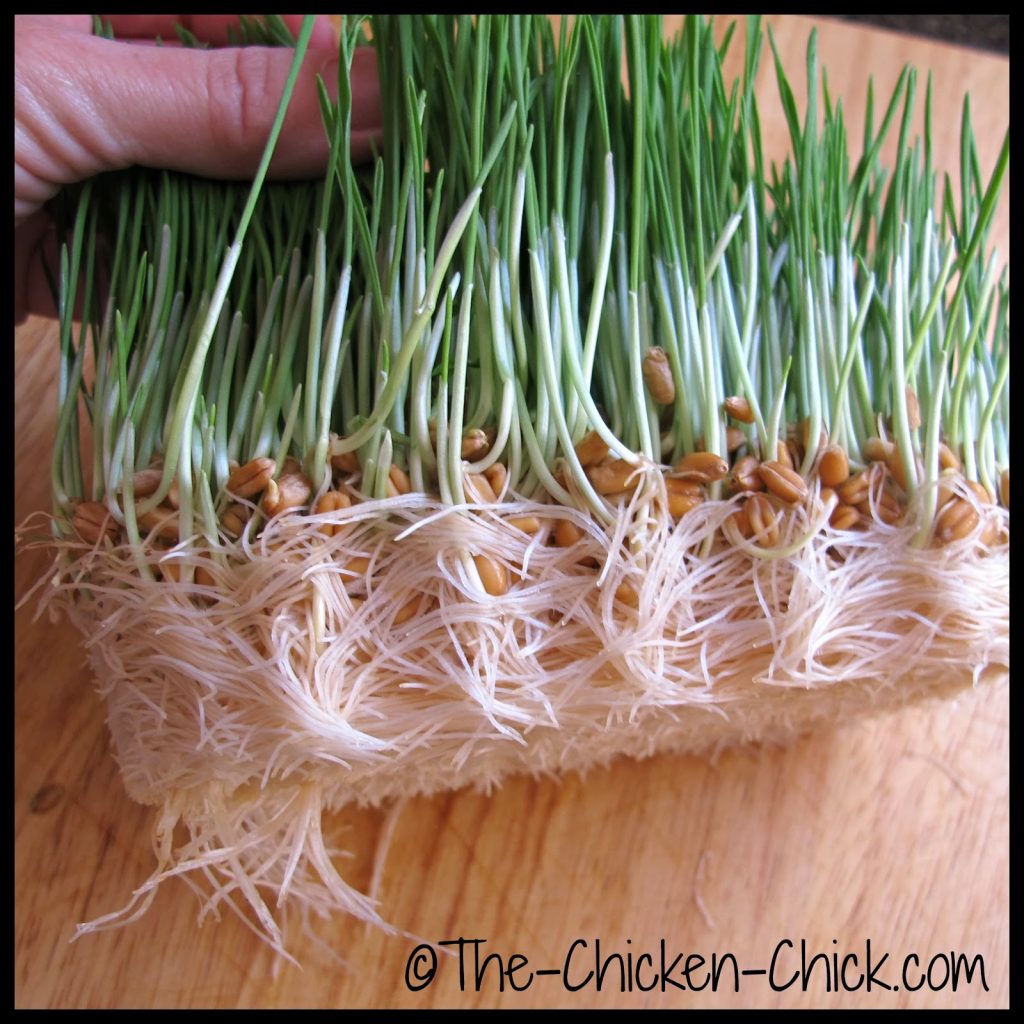
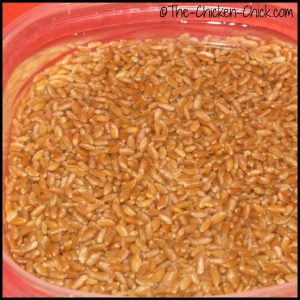
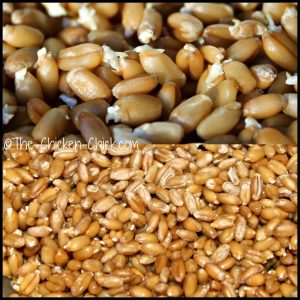
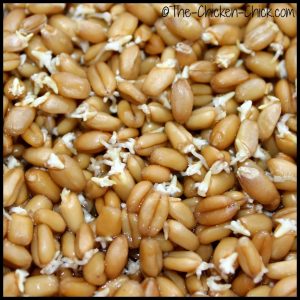
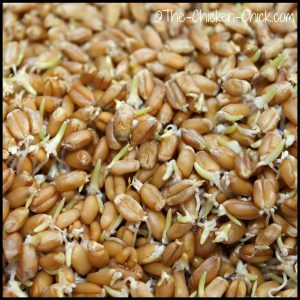
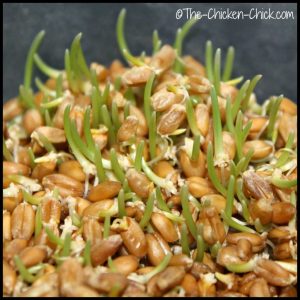
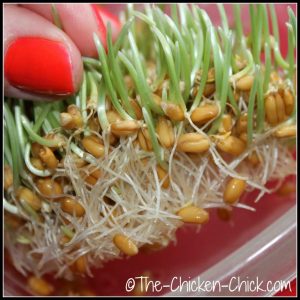
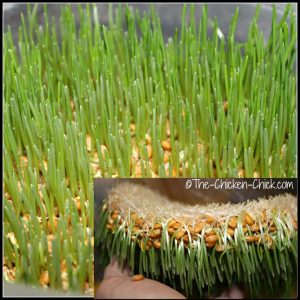
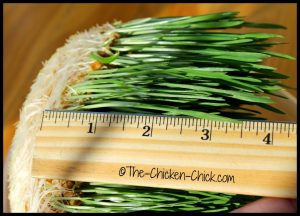
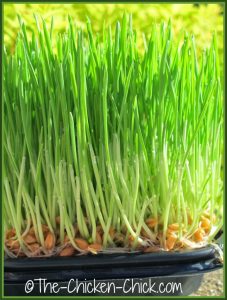
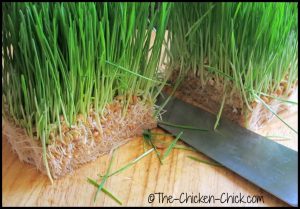


















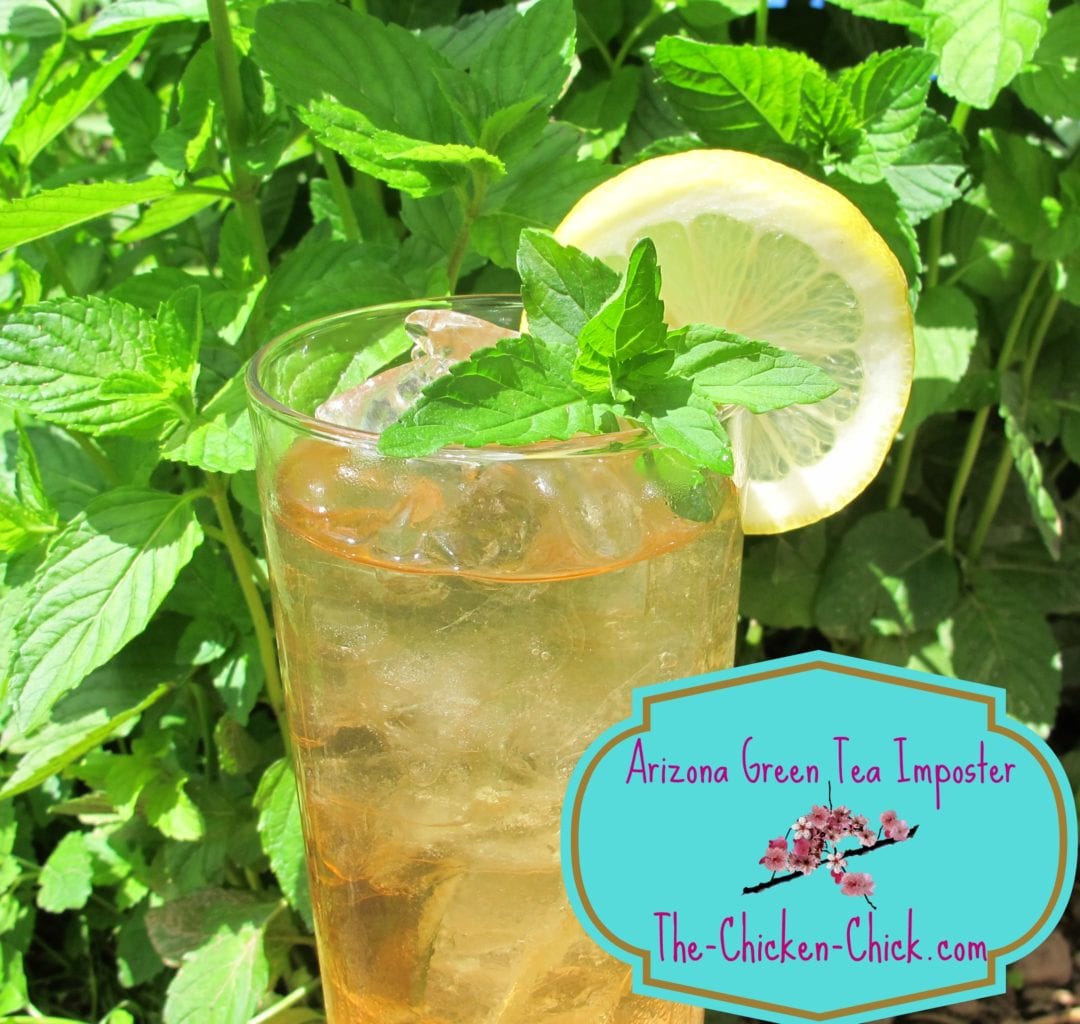
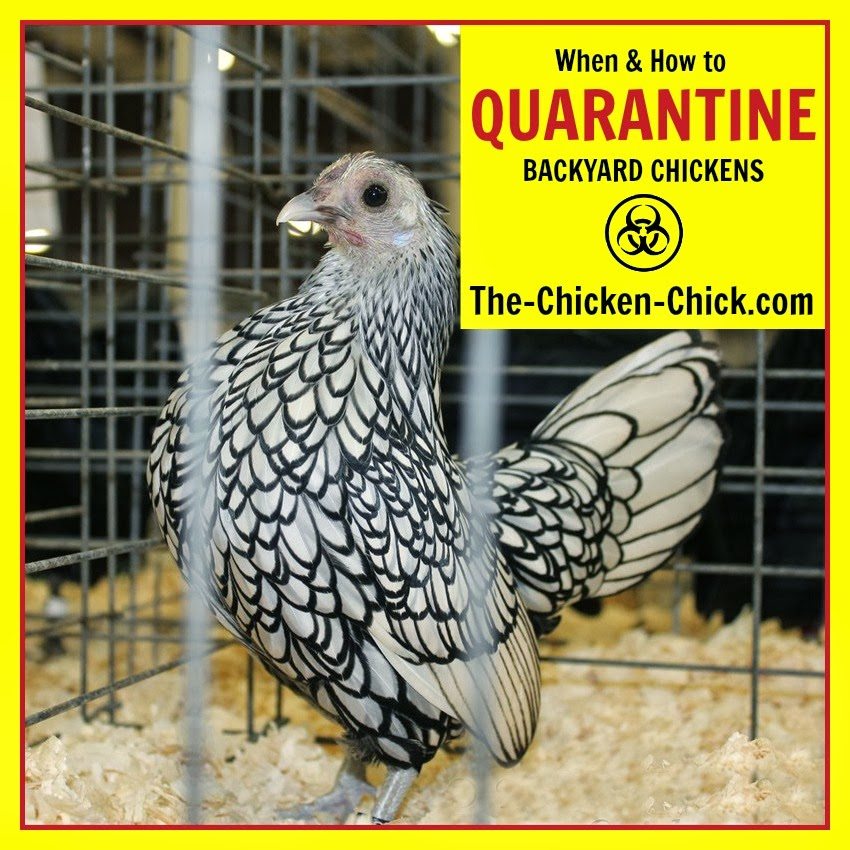















I love my chicken I love my chickens.I love them all …chick norris, click nugget, Dixie chick, peepers, rabbit and my stud king author….I love chickens! !!
This is a wonderful idea! I just started cutting up chard or spinach to feed to the girls (with some dried meal worm thrown in, because I'm a spoiler) a couple of times per week so that they have some greens and they have loved it. Can't wait to try this and mix things up!
I'm wondering WHERE you're sprouting for 80 ladies! :)
Beautiful art..
I'm wondering HOW I'm sprouting enough for my eighty ladies :) Great Article…love the artwork!!